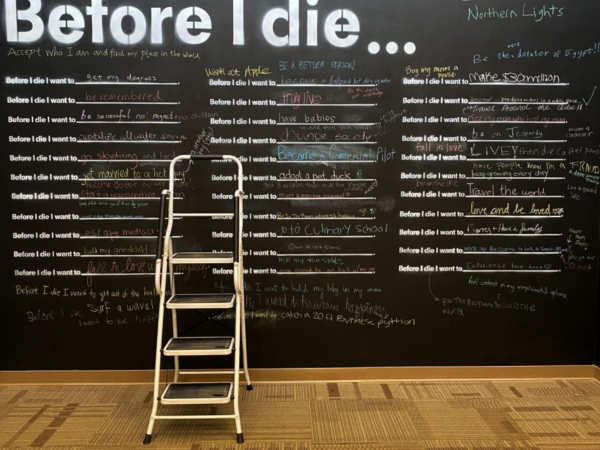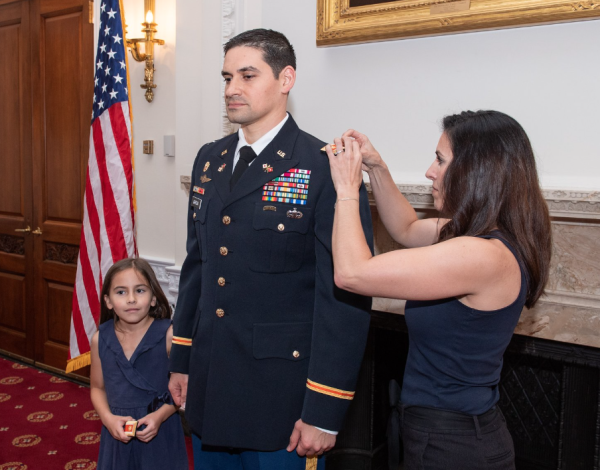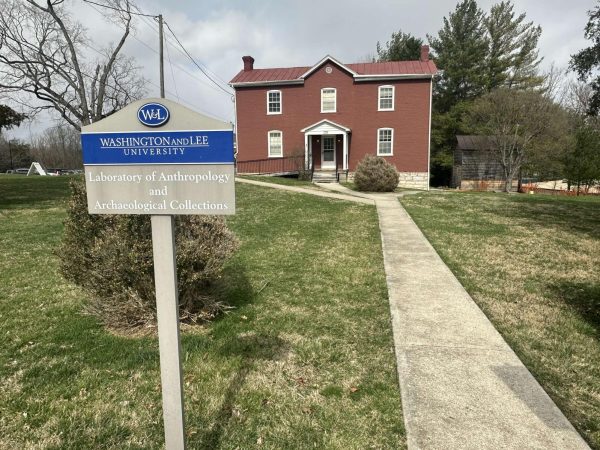Faces of Oda exhibit captures Nepalese life
The photo exhibit is closed to the public, but open to the university community
September 22, 2020
The new Faces of Oda exhibition in Wilson Hall combines poetry by Sarah Helms, ‘15, and university photographer Kevin Remington’s portraits of Nepalese women from the rural Nepalese village of Odanaku.
John Christopher ‘09 founded the Oda Foundation after becoming deathly ill in Odanaku, revealing the village’s desperate need for near- by medical care.
Remington had long awaited the opportunity to go to Odanaku and the Oda Foundation.
“It had always been on my radar,” Remington said. “I had talked to John about it, and I had been to Nepal in the past, loved the area, and so I always kind of wanted to go.”
The foundation now provides child delivery, general medical services and education for village residents.
James Ricks ‘21, a friend of Remington, traveled to Nepal two summers ago and spent time at the Oda Foundation. He returned with the idea of creating a book to raise money for their cause.
Not long after their discussion began, Washington and Lee announced its first sabbatical grant for staff members. Remington applied for it with the intent to bring Ricks.
Remington received the grant, and Ricks re- ceived the Davis Project for Peace grant. But due to scheduling and COVID-19 conflicts, Remington went alone.
While Ricks retains access to all of his awarded funds, the ongoing pandemic has prevented him from traveling.
“So my part of it kind of rolled, where his part of it kind of stalled, temporarily, so we weren’t able to do it together,” Remington said.
Fortunately, Remington knew Helms was in Odanaku and they made plans to work together.
“It was a huge help because I don’t speak Nepali, and she does,” Remington said. “She knew almost everyone in the village.”
Helms and Nepali native Raj Kumari started a women’s cooperative for the Oda Foundation to help the women of Oda supplement income.
Helms wrote the “sketch poems” which now accompany several pictures at the exhibit.
While COVID-19 transformed Ricks and Remington’s original idea, the current goal is to collect photographs and present them in a way that can be sold to raise money for the Oda Foundation.
Remington added that at this stage, the photographs could probably become a book.
“The photos that are up, are kind of a held back version so that eventually we can do something much bigger,” Remington said.
The exhibit of portraits is now exhibited on the first floor of Wilson Hall.
Wilson Hall is closed to the public, but open to the campus community which knows Rem- ington’s work well. Clover Archer, the director of Staniar Gallery, said she thought the intimate, impactful photographs would be fitting.
“The work is so personal and powerful, the portraits are so gorgeous, it seemed like an appropriate exhibition for right now,” Archer said.“I think it’s exciting to show a different aspect of [Remington’s] work and practice.”
Archer collaborated with Staniar Gallery intern Chloe Parsons, ‘22, to plan the exhibit layout.
“It was a really fun exhibition to design,” Archer said. “Formally, there was a lot of color, a lot of pattern.”
Sujana Basnet, ‘23, a Nepalese student from Kathmandu, believes these portraits get at the heart of the Nepalese way of life.
“These images did a great job of capturing the very essence of Nepal,”Basnet said. “Even though I did not grow up in rural Nepal, I still believe that places like Kalikot and women like the ones portrayed in the images is where the true culture of Nepal lies.”
Basnet feels that the university should have more international exhibits to expose the campus community to global cultures.
“These images can be powerful ways to introduce cultures that most people on campus wouldn’t even consider being around,” she said. They “force me to look at life through a lens that is certainly very different from what I am used to, a lens through which life is far more beautiful.”












